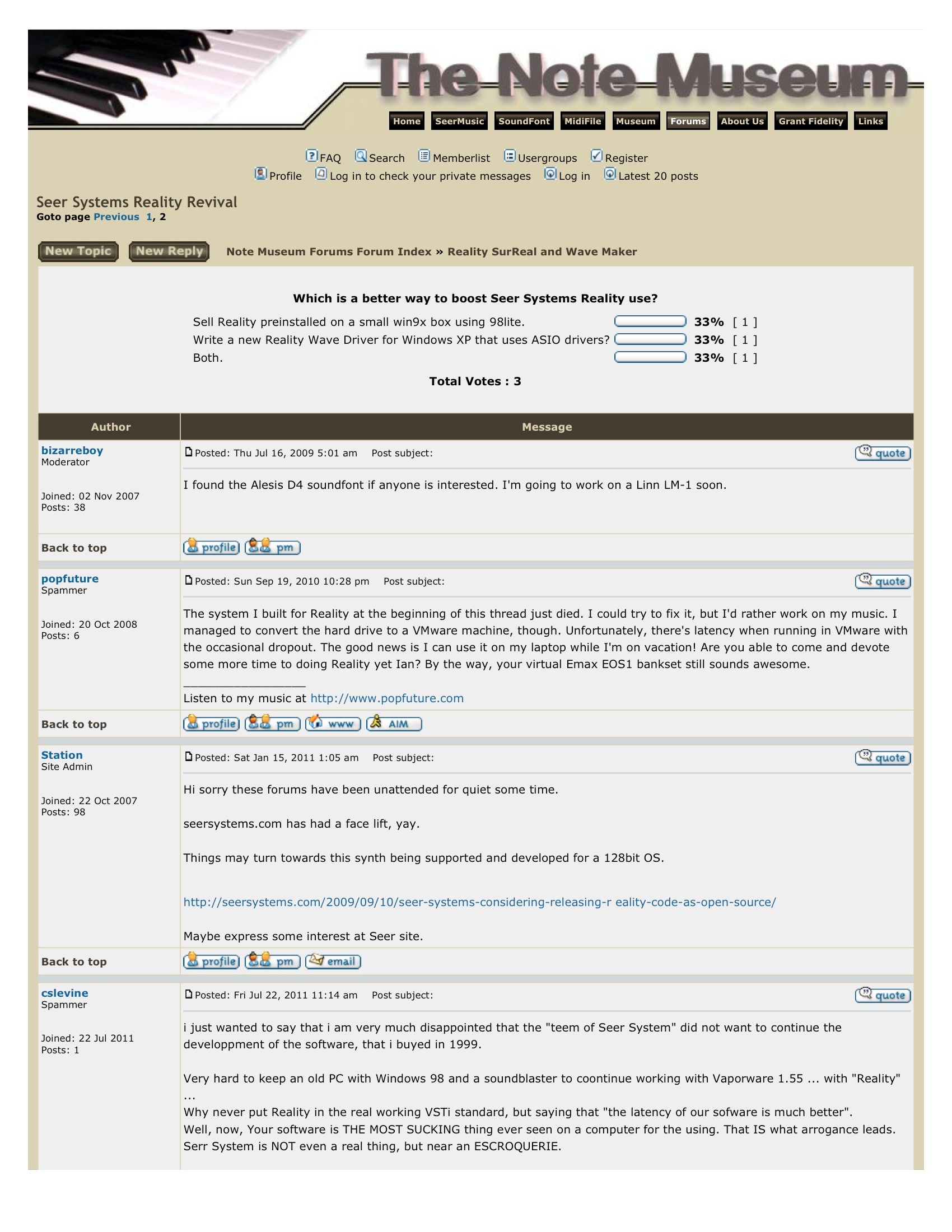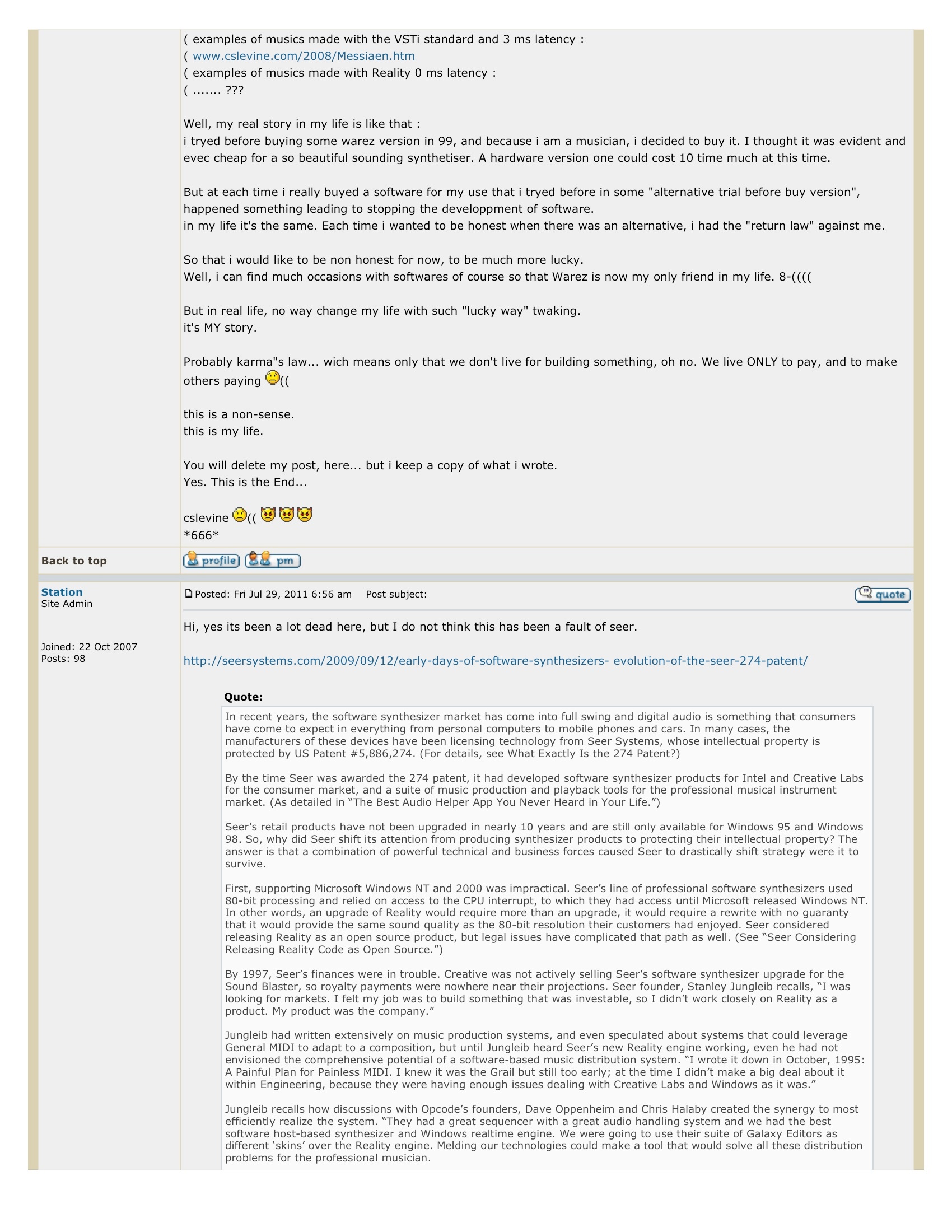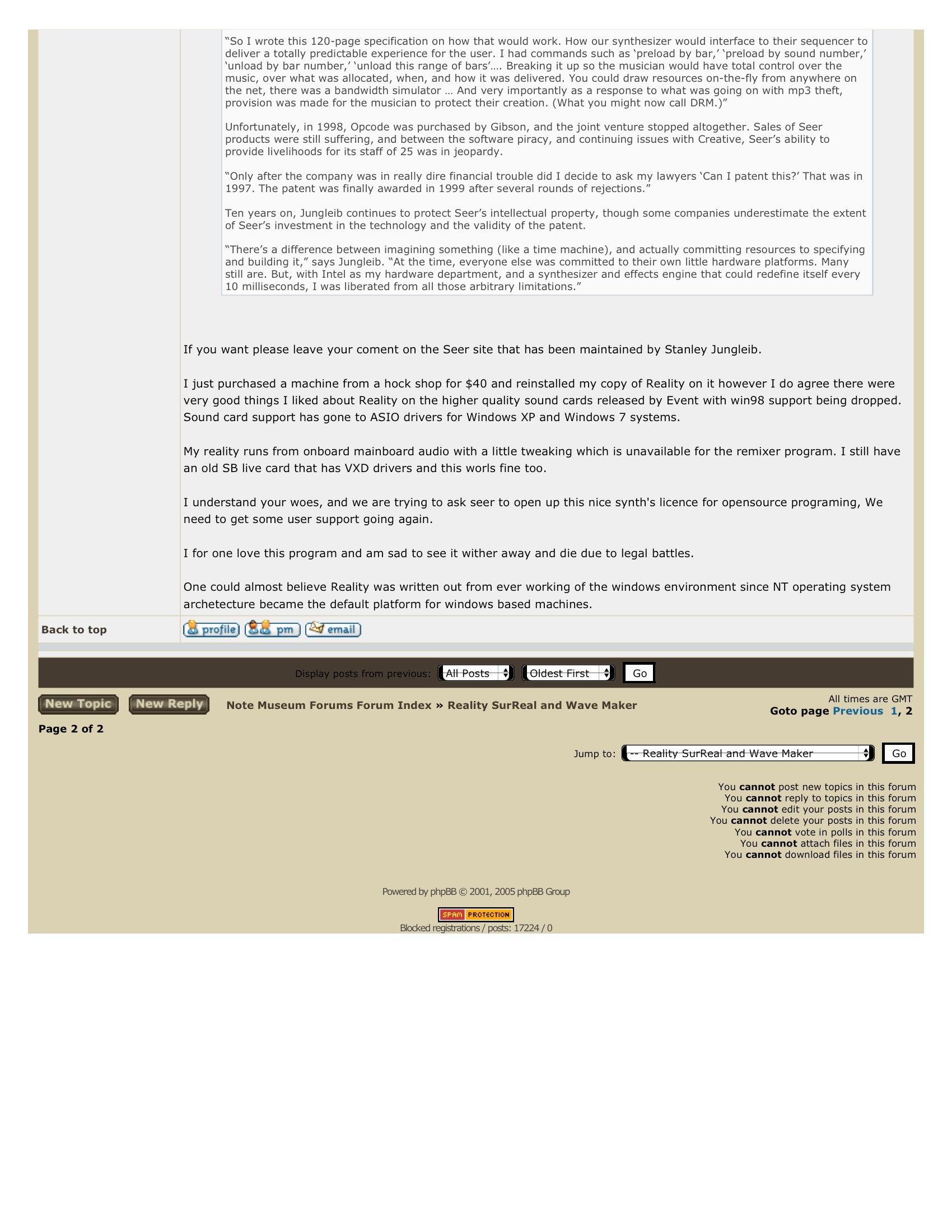NoteMuseum Perseveres
Posted on : 29-07-2011 | By : admin | In : Technology Licensing
Tags: Note Museum, open source, Reality, Seer Systems
0






Seer Systems released the acclaimed Reality software synthesizer in 1997, at which time it was supported on Microsoft Windows 95, and eventually on Windows 98. Over the years, a recurring question has been “When will Reality be available on newer operating systems?” A decade later, Seer has not yet announced plans to release an upgraded version, a situation which many find confusing.
What the general public may not know, is that Seer has considered not only upgrading Reality to newer versions of Windows, but releasing the Reality source code to the public. For various reasons, however, Seer has done neither. A recent email exchange between a Remixer user and Stanley Jungleib, presented a new opportunity for the Seer Systems founder to update the legal and technical issues:
I’m a musician in Mexico City. I love the seer ReMixer, it sounds incredible. I sometimes use Vanvasco’s but it just does not compare.
Now, that said, I hate you guys for not making the windows XP upgrade! Who the heck uses Windows 98 anymore? When the screen in my old Compaq Armada (old laptop) died on me, I basically lost your awesome program. I’m now stuck with a very crappy one I use in my new laptop and I just hate it.
It’s like a masterwork gone totally to waste.
Seer Systems responds:
The SeerMusic® technology (U.S. Pat #5,886,274) which defines the Remixer system has been licensable. But that is a separate matter from the body of assembly and C code upon which the Reality 1.5 real-time engine (the superset of all the products) is built.
One of the reasons you distinguish and love its sound is that Reality is (to my knowledge) still the only synthesizer that runs at 80-bit resolution.
Briefly, from 1993 when we invented the 486 synthesizer for Intel (within Win 3.1), and Pentium-rewritten for Win95 and Win 98, we utilized unique interrupt techniques to operate ‘outside’ the standard OS, if you will. Windows NT blocked our ability to do this. So, even were we to shoehorn Reality into a 64-bit system like Vista, it could not deliver the distinct audible results you appreciate in Win 98! (By the way, 80 vs. 64 bits is an entire CD’s worth of extra filter precision from 1999’s Reality, compared to virtually all other contemporary host-based systems.)
Seer has wanted to release the code to the open source community that may be preparing for 128-bit operating systems. But that is not simple either, because the engine contains other patented elements—most notably Sondius® physical modeling—that can’t just be ripped out with a delete key. No matter the disclaimers, warnings, and license terms clarifying the difference between technology and code, at this time open distribution would seem to create abundant opportunity for misunderstandings. Can the community recover the techniques which clearly contain a great heritage, while respecting the remainder as owned exemplifications?
Seer Systems welcomes suggestions to resolve this dilemma so that the development community can indeed learn from this “masterwork.”
– Stanley Jungleib